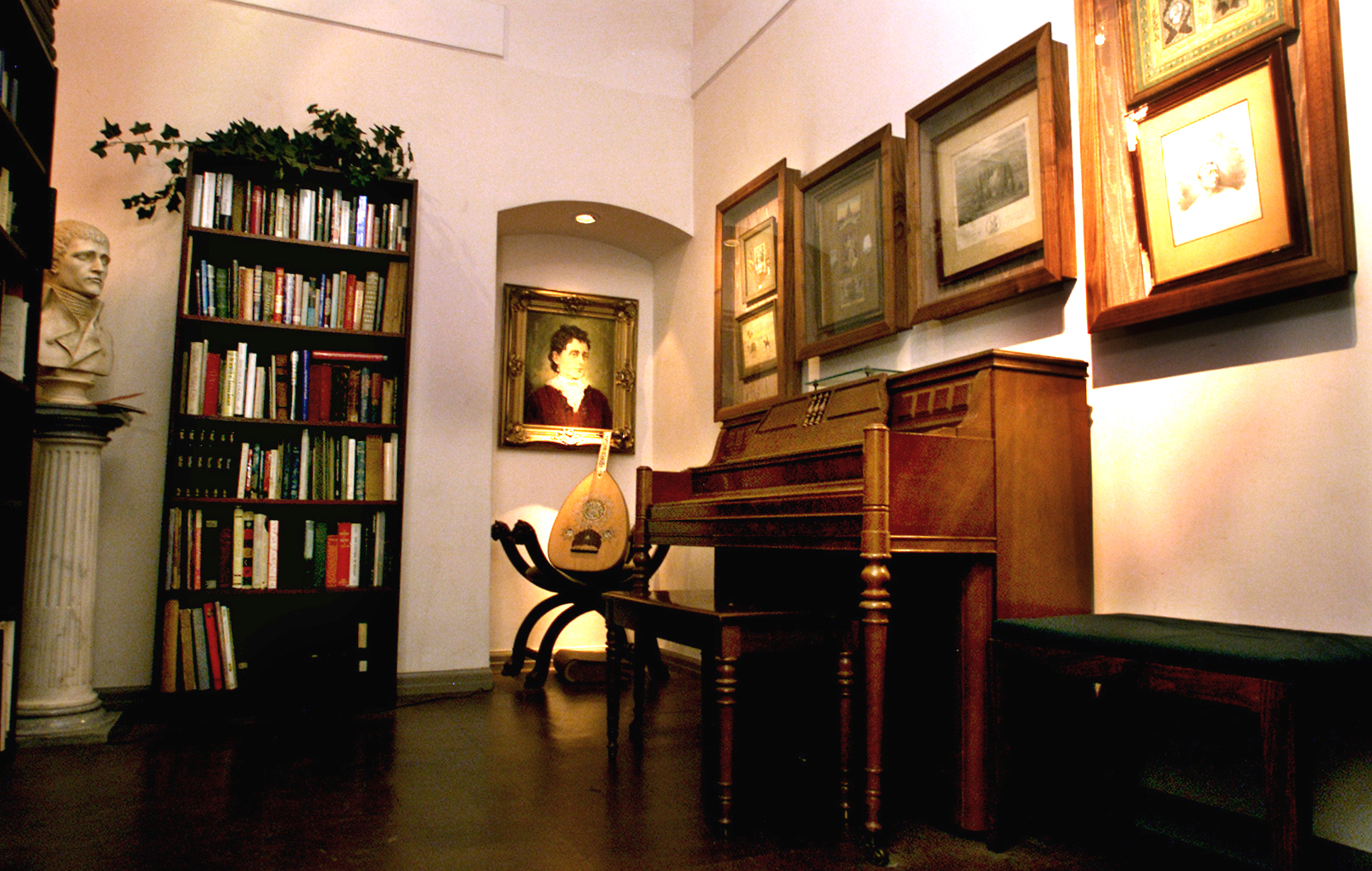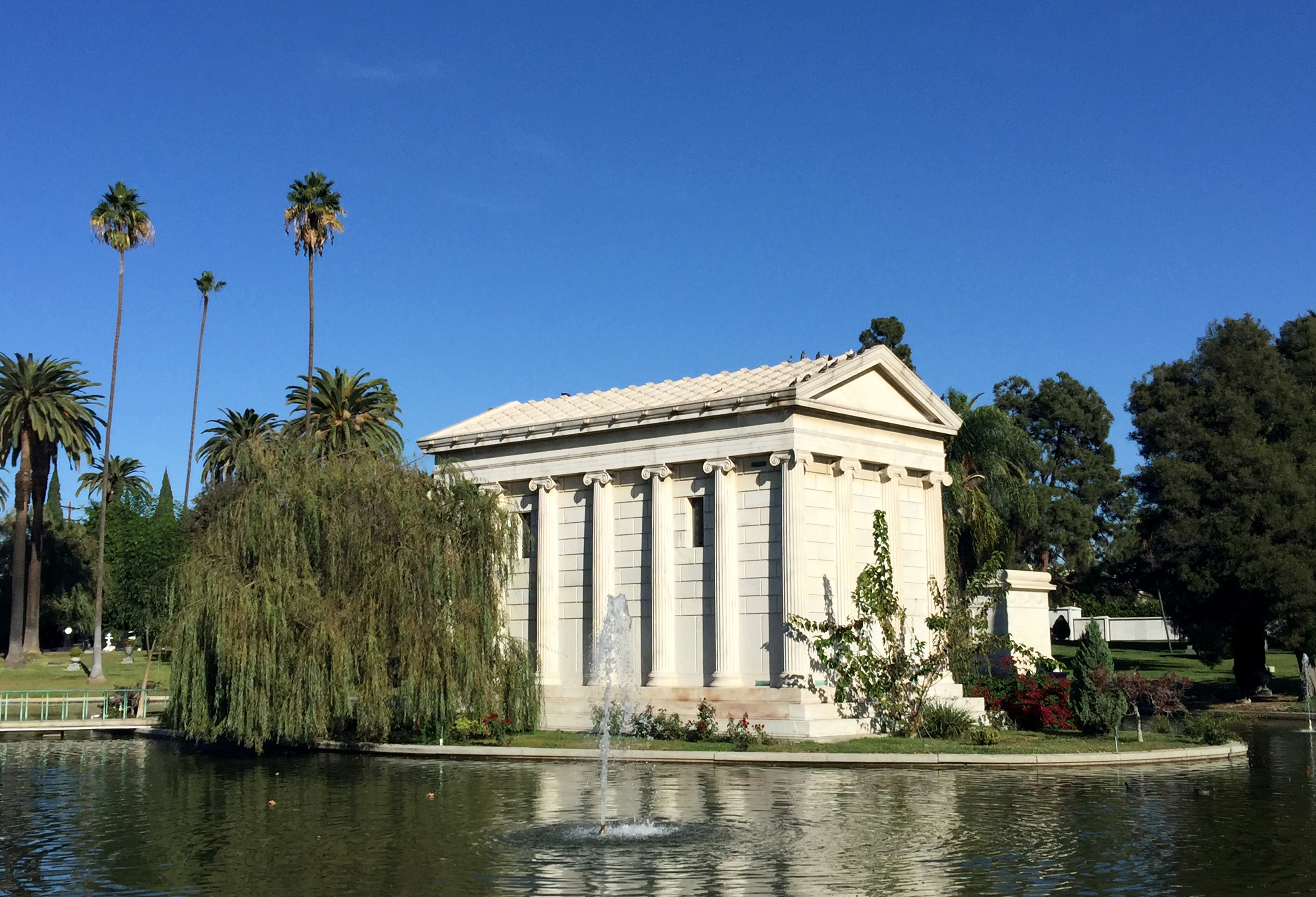
By the late 1990s, Hollywood Memorial Park Cemetery was at risk of closure. Opened in 1899, the cemetery had been run into the ground financially and was in urgent need of repairs and maintenance. Luckily it was bought out by an established funeral company, given a facelift and renamed Hollywood Forever.
It’s a lesser-known sight of Hollywood, but is home to a dazzling array of deceased movie stars and directors, including classic actors Rudolf Valentino and Douglas Fairbanks; cartoon voiceover artist Mel Blanc; directors John Huston and Cecil B DeMille; and more recent stars such as actor Mickey Rooney. There are also TV legends immortalised here, including Vampira, an early small screen host of horror movies. And it’s not just humans. Near the impressive mausoleum on the grounds is a memorial to Toto, Dorothy’s dog in The Wizard of Oz.
You can visit Hollywood Forever for free during opening hours, but the best way to discover its many highlights is by joining the weekly Cemetery of the Stars Tour .
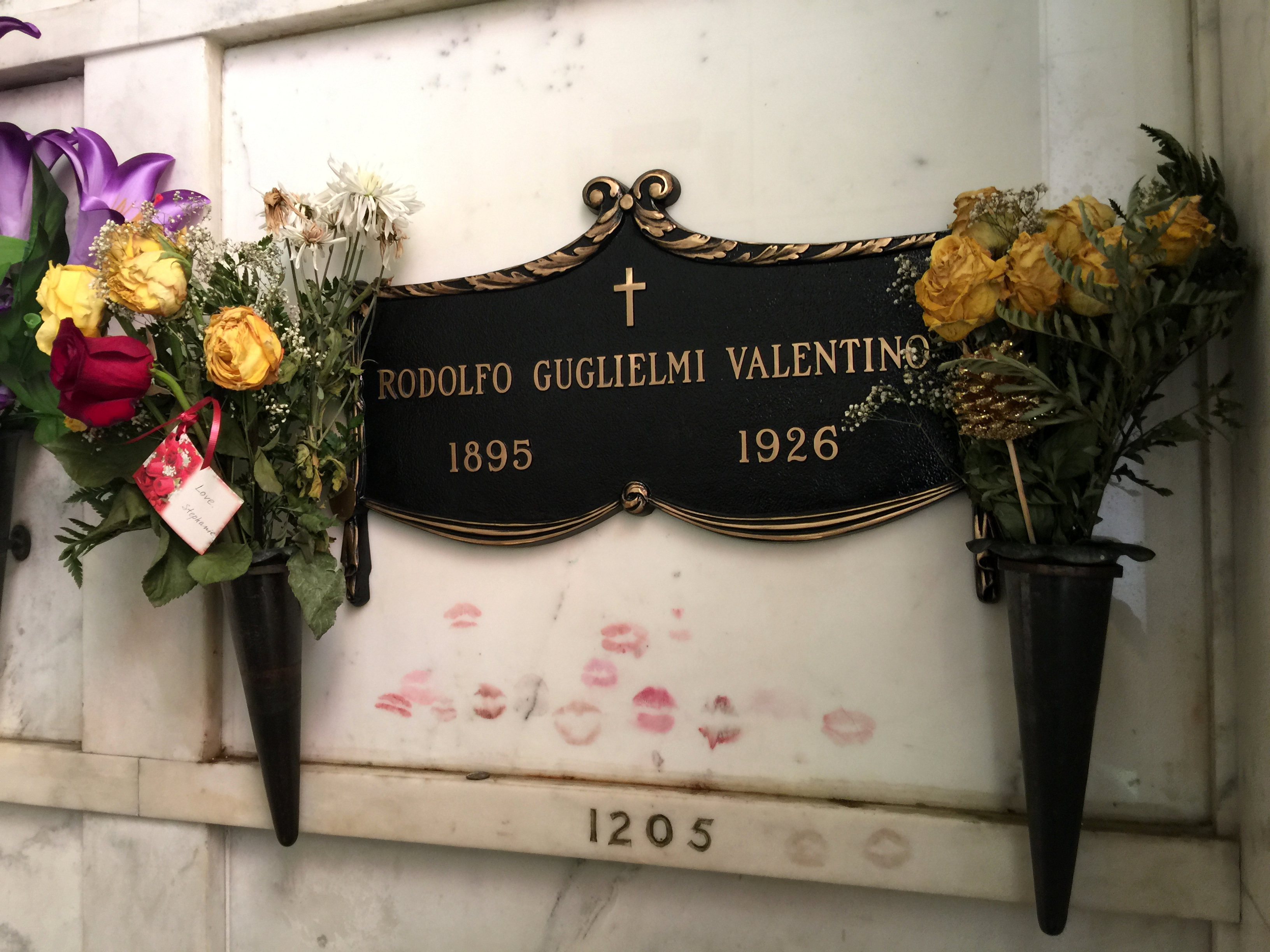
It’s easy to shout “Hooray for Hollywood”, but Los Angeles’ silver screen slickness is merely a veneer over the seedy past of its Downtown district.
Although DTLA (as locals call it) is on its way back up these days, gradually being gentrified as new residents discover the appeal of its grand old architecture, the dodgy history of the area is well worth exploring and is expertly retold by tour operator Esotouric on its regular Hotel Horrors & Main Street Vice tour.
Participants crisscross the gritty streets by bus and on foot as they delve into the darker side of this sunny city. Stops include a number of historic buildings, from grand upmarket hotels to seedy boarding houses, while the well-read guides recount true crime tales involving robbery, murder and Prohibition-era speakeasies.
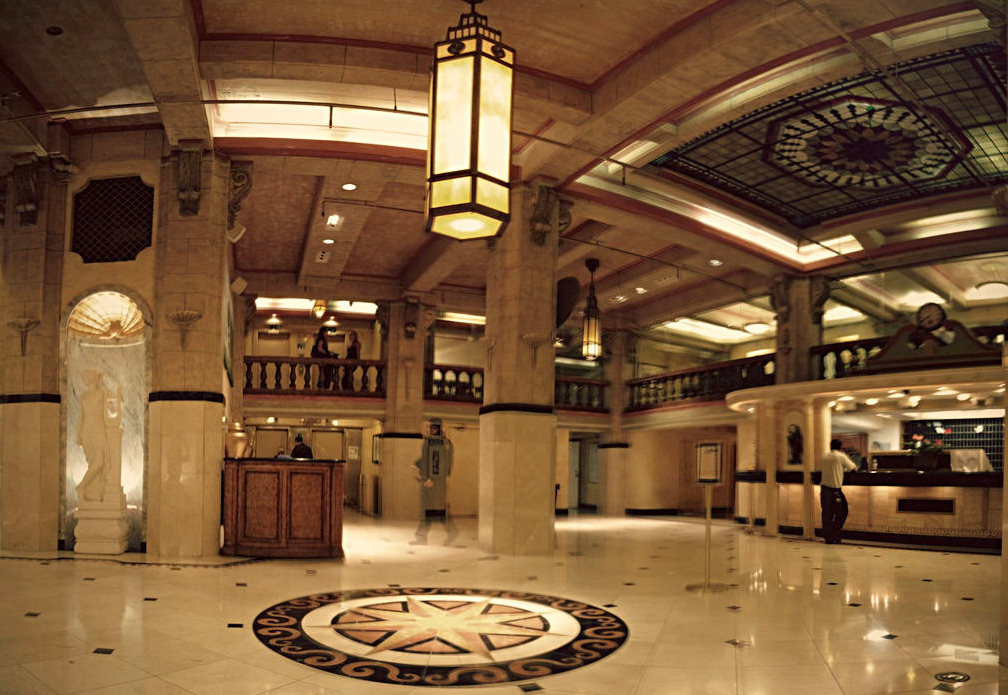
If you’re a time traveller looking for a fix for your faulty robot, Los Angeles is the place to be. Specifically the newly hip neighbourhood of Echo Park, where you’ll find the Time Travel Mart.
As the name suggests, this is no ordinary local shop. On its shelves you'll find a range of android accessories, including emotion chips (choose from love, fear, envy, guilt or boredom); a robot memory eraser (a horseshoe magnet); and a “robot toupee”, made from steel wool. For those who plan to head deep into the future, or the past, it also sells a wide array of time travel basics including canned woolly mammoth, togas stored within jars, communist-branded soap, anti-deodorant for Vikings wanting to smell fearsome, jars of leeches for medicinal use, and chainmail armour for medieval jaunts. A practical wall chart depicts beards from various historical eras.
It’s all good fun, and in reality helps to fund a non-profit organisation which assists local children improve their writing skills.
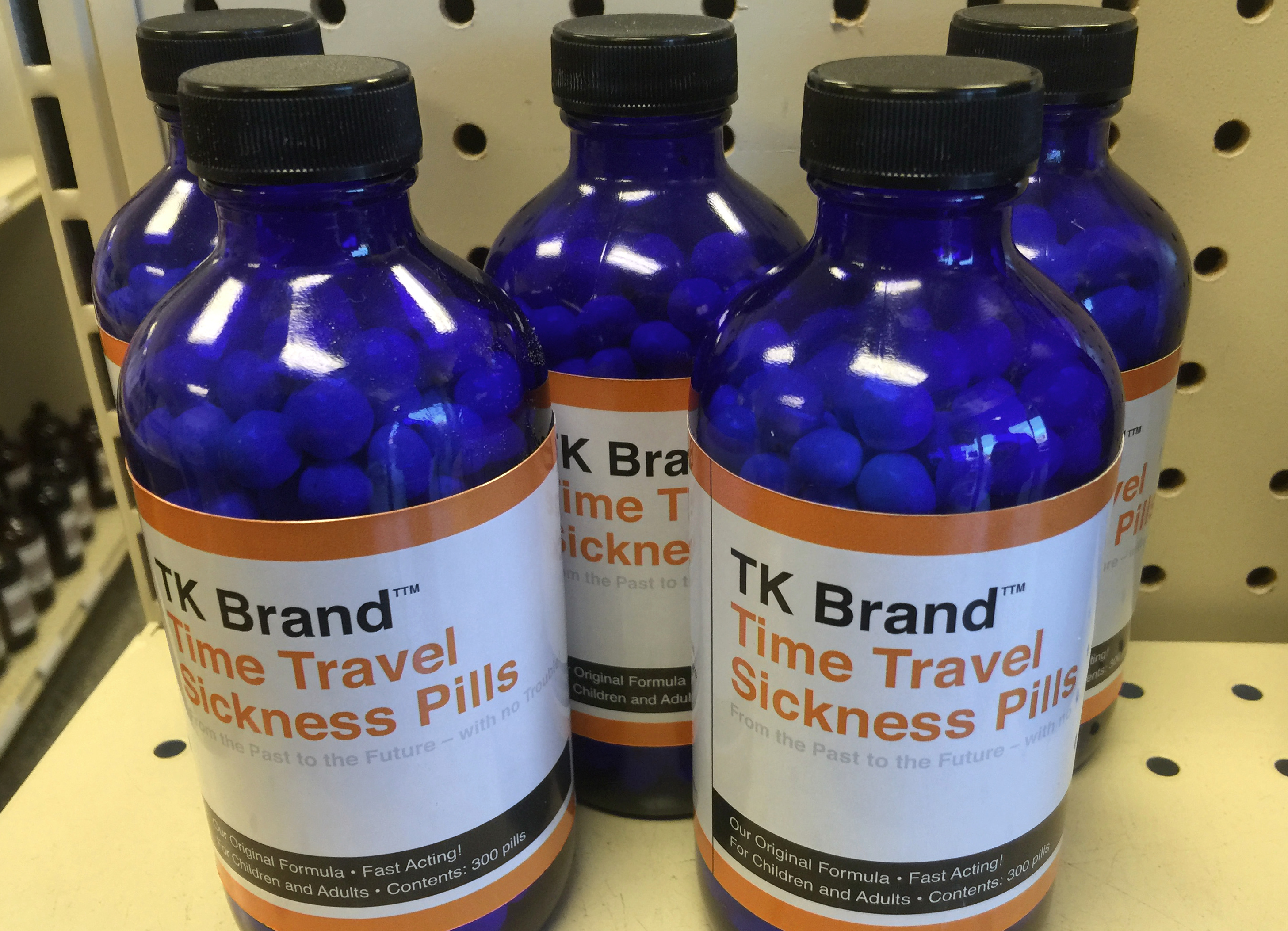
El Pueblo is the oldest part of Los Angeles, founded in 1781 just north of what's now Downtown. Its central thoroughfare, Olvera Street, has a colourful Mexican marketplace and the Avila Adobe, the oldest surviving house in the city, built in 1818.
Less visited by tourists, however, is the América Tropical Interpretive Center , a fascinating and free museum dedicated to a single mural, which was painted on the side of the nearby Italian Hall in 1932. The artist, renowned Mexican painter David Siqueiros, used the commission to voice his anger at colonial oppression in Latin America, depicting an American eagle above a crucified native Mexican. Within a few years it had been painted over; but when the mural began to reappear through the thin whitewash decades later, it was preserved by the Getty Conservation Institute and the City of Los Angeles.
The interpretive centre explains the background of the painting, including the torrid politics and deprivation of 1930s LA. From an observation platform, the visitor can then see the preserved remains of the once controversial art.
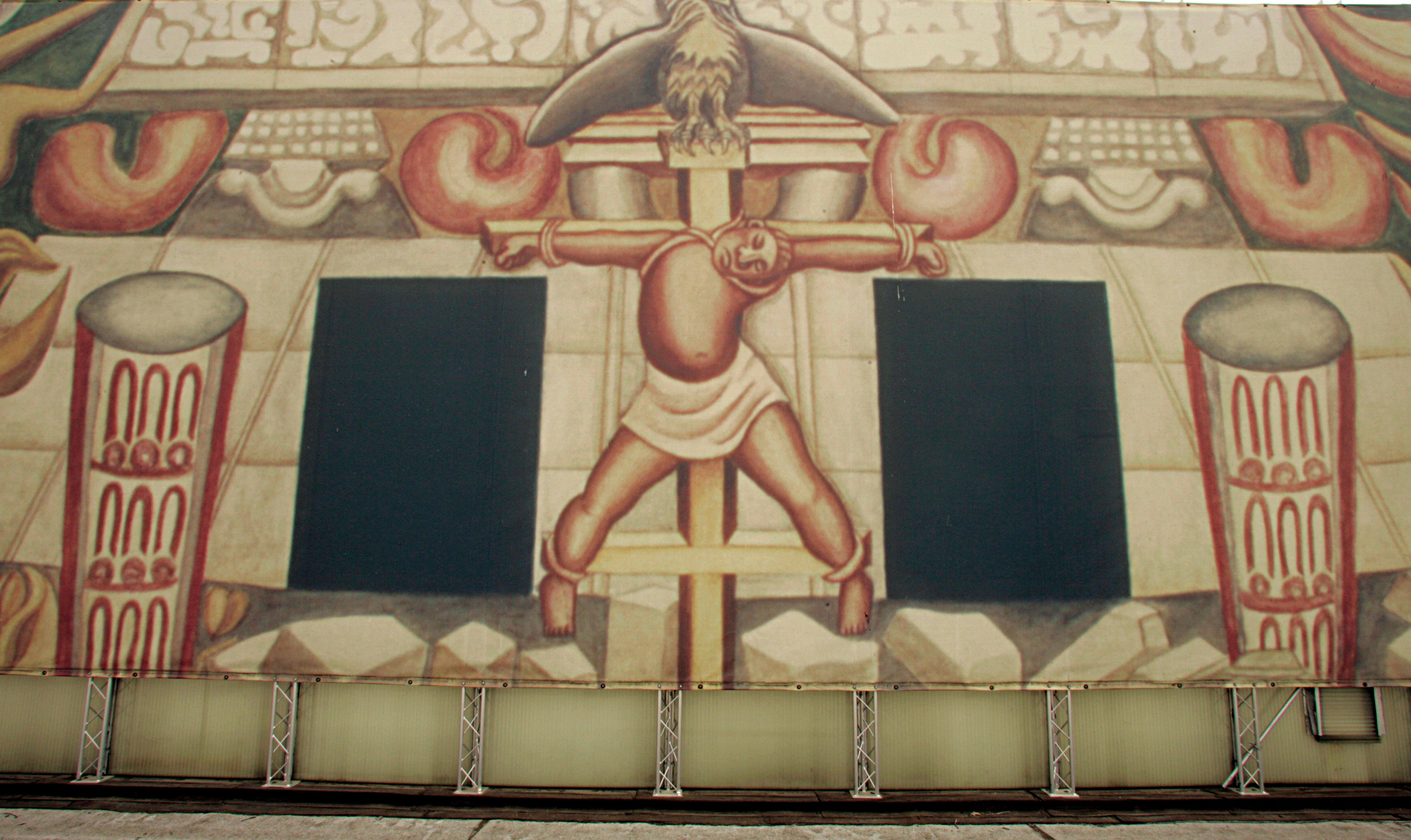
Riddle me this – how was the French dipped sandwich invented? Was a standard roast beef sandwich accidentally dropped into the bottom of a used roasting pan, absorbing its flavour? Or did a diner ask for gravy to soften his sandwich, as his teeth were sore from dental work? Take your pick. Two places claim to have invented this classic Los Angeles sandwich – a combination of roast beef and flavoursome gravy – in 1908, and those are the two origin stories.
The first venue is Phillipe the Original, an old-style diner on the edge of Chinatown. Its take on the sandwich is created by coating the bread with a jus derived from roasting pan drippings and beef stock over two days. Served with pickles, chili and potato salad, and eaten at a bench above sawdust-covered floors, it’s tasty and memorable.
In the heart of Downtown, Cole’s bar and restaurant offers a rival version, this one served with a bowl of gravy into which the sandwich can be dipped. Cole’s atmospheric interior is also a great place to pull up a stool, lean your elbows on the bar, and enjoy a refreshing cocktail as you decide which sandwich is better.
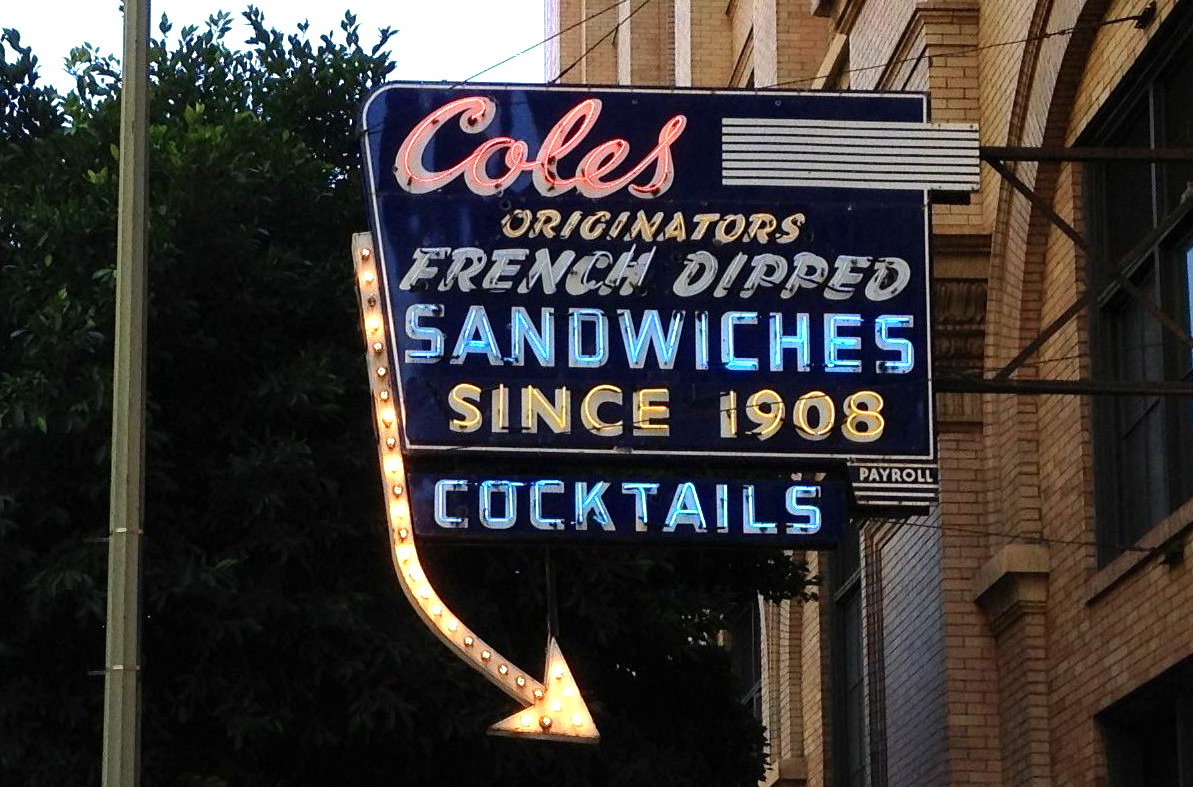
There are plenty of good reasons to spend time in Culver City: going on the Sony Pictures studio tour, for example, or having a drink at the bar of the classy 1924 Culver Hotel.
And if an exhibition of paintings featuring Soviet space dogs or a collection of cat’s cradle string art are more your thing, then Culver City has just the place for that too: the Museum of Jurassic Technology, LA’s strangest historical institution.
The dizzying array of topics here includes objects collected from trailer parks, Renaissance theatre special effects, letters written to an observatory, an African ant, mini-mosaics viewed via microscope, and the pseudo-scientific discoveries of 17th-century scholar Athanasius Kircher.
After inspecting the displays, head for the lovely rooftop garden where a mysterious Russian woman with a sleek dog serves you a complimentary glass of tea. Sip and ponder the big question – is the museum for real, or just one big art installation?
